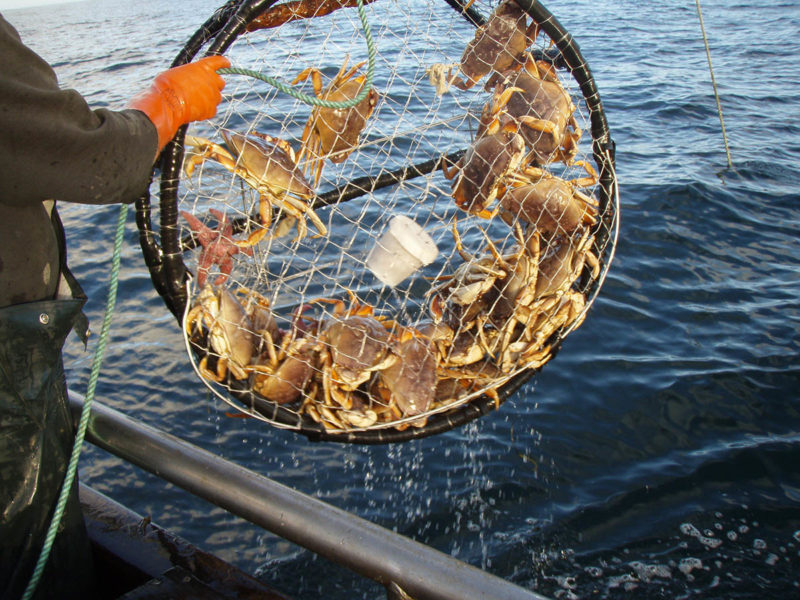With restaurants shuttered and out-of-work consumers spending less, the coronavirus’ impact on the West Coast fishing fleet has been painful. But one sector of the seafood economy has found a silver lining: community supported fisheries and direct-to-consumer markets.
“It’s a pretty bad situation. I know there are all kinds of people in a bad situation — it’s not just fishermen,” says Larry Collins, president of the San Francisco Community Fishing Association. “Everybody is losing their ass.”
Nearly 80 percent of the domestic catch is sold to restaurants, says Noah Oppenheim, executive director of the Pacific Coast Federation of Fishermen’s Associations. This drop in demand has caused ex-vessel prices to plummet. In March, fishermen typically received $6-7 per pound for Dungeness crab, this year they were getting around $2.
“I told the guys who are still fishing it’s time to stack out, we’re done,” Collins says. “It’s stopped the crab business.”
With uncertainty over how long West Coast restaurants will remain closed – and concern over how many will be able to survive a prolonged closure until restrictions are eased – fishermen and buyers aren’t optimistic about the ex-vessel price of salmon in the coming months.
The California king salmon season is set to open in early May with strong runs predicted, says Collins. But with the restaurant market traditionally buoying the price, it’s unlikely fishermen will receive the payout they’re accustomed to.
Oppenheim sees the West Coast seafood business “retooling overnight” to direct-to-consumer markets, noting people still want seafood, but in a time of shelter-in-place the method of delivery must change. He’s also seeing some restaurants trying to stay in business through take-out and delivery.
Alan Lovewell, owner of Monterey Bay-based Real Good Fish a direct-to-consumer community supported fishery business, has seen an uptick in consumer demand in locally caught seafood since restrictions to stem the spread of the coronavirus were implemented.
At the same time, he says he has received many more calls from fishermen looking for new outlets to sell their fish.
“Guys are having trouble. We’re working with more fishermen than we have before, but there’s more fish than we have a market for,” Lovewell says. “We’re trying to grow that market for these guys.”







